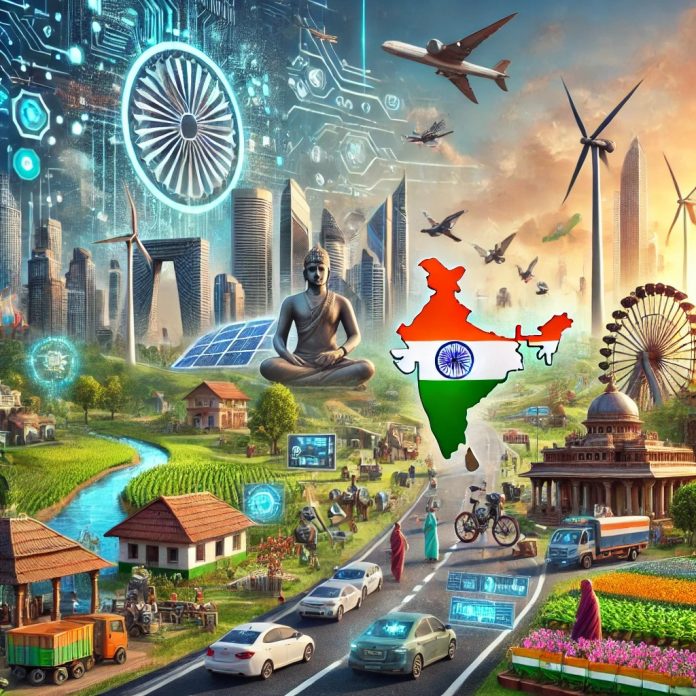India today is the 5th largest economy, and it is predicted that India will be 3rd largest by 2030. In ancient times, with a 30% contribution to global output, India was known as “Sone ki Chidiya” (Fig 1). After attacks from several invaders and finally becoming an independent country, India struggled with multiple economic challenges, and today, India is on the way to again becoming one of the countries with major contributions to global output.
 Fig 1 :Contribution of select economies in total GDP
Fig 1 :Contribution of select economies in total GDP
The foundation for this growth was laid way back in 1991 when the Government embarked on the road to LPG (Liberalization, Privatization and Globalization). Coincidently, the size of the Indian and Chinese economies was approximately similar during that time. In 1990, India’s total GDP was 320 bn as compared to 360 bn of China. Since then, the economy of China has grown exponentially, and today, China is known as the “Global Manufacturing Hub” with a total GDP of 17.79 tn. (Fig 2)

Fig 2 : GDP of India and China 1960-2023
However, since 2021, China’s total GDP has not grown much. In 2021, the total GDP was 17.82 tn, which increased marginally to 17.79 tn in 2023. As per IMF projections for 2024, China is slated to grow at 5%, and India will grow at the rate of 7%. With this growth, India will become 3rd largest economy by 2028, as per IMF projections and by 2029, as per WEF’s forecast. India needs to overtake Germany and Japan with total GDP of 4.59 tn and 4.11 tn, respectively. Japan. As per IMF, the GDP growth rate for Japan in 2024 will be 1.3%, whereas the GDP growth rate for Germany will be between 0.1 and 0.4%.

Fig 3: GDP of top 10 countries 2024
India and China are ranked among developed countries like the USA, Germany, UK, France, etc., but still are not considered developed nations. The major reason is the lower per capita income compared to other developed countries due to the huge population of both countries.
To become Viksit Bharat, India has to focus on strategies for inclusive and holistic growth while focusing on key areas like education, healthcare, social security, infrastructure, skilling, technology, trade integration, innovation, research & Development and truly sustainable growth.
Author-
Dr Alka Maurya,
Director & Professor
SIIB 30th August 2024


